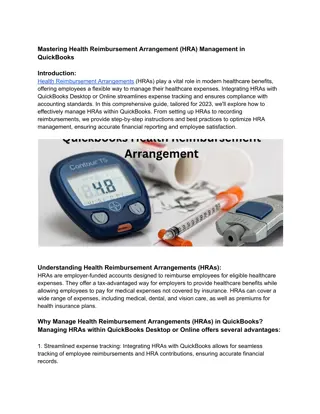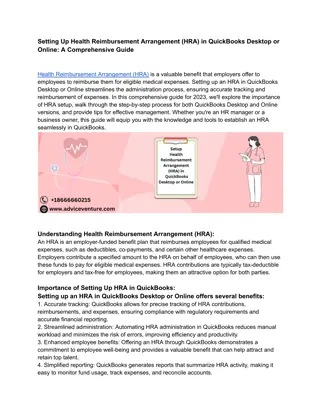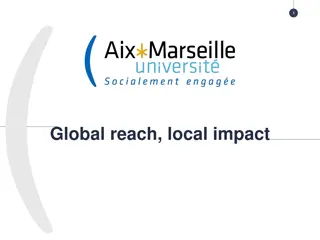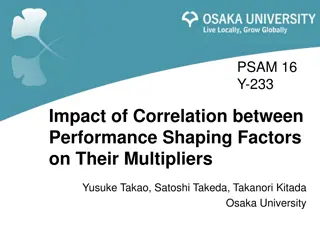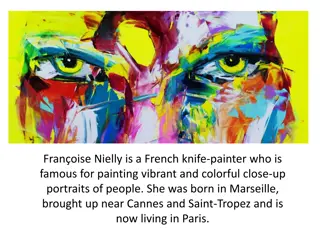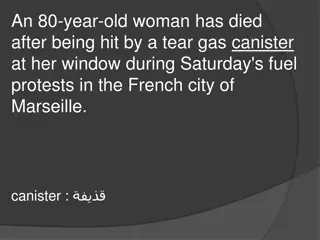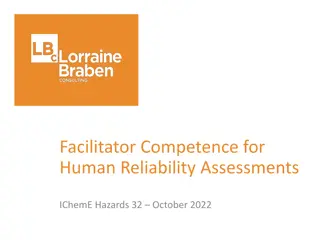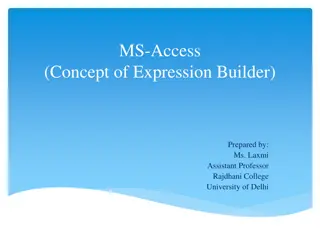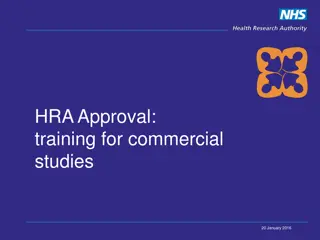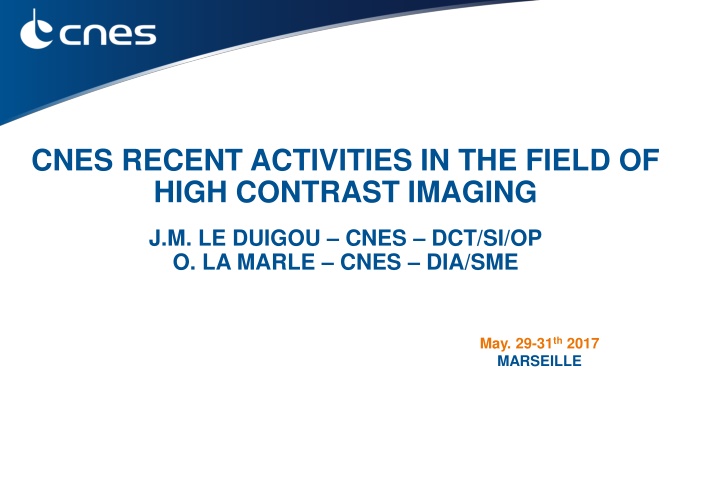
Recent CNES High Contrast Imaging Activities and R&D Collaborations
Explore recent CNES activities in high contrast imaging and collaborative research and development (R&D) efforts with various laboratories for space missions. Includes details on support to labs, R&D projects, and recent PhD initiatives in the field.
Download Presentation

Please find below an Image/Link to download the presentation.
The content on the website is provided AS IS for your information and personal use only. It may not be sold, licensed, or shared on other websites without obtaining consent from the author. If you encounter any issues during the download, it is possible that the publisher has removed the file from their server.
You are allowed to download the files provided on this website for personal or commercial use, subject to the condition that they are used lawfully. All files are the property of their respective owners.
The content on the website is provided AS IS for your information and personal use only. It may not be sold, licensed, or shared on other websites without obtaining consent from the author.
E N D
Presentation Transcript
CNES RECENT ACTIVITIES IN THE FIELD OF HIGH CONTRAST IMAGING J.M. LE DUIGOU CNES DCT/SI/OP O. LA MARLE CNES DIA/SME May. 29-31th2017 MARSEILLE
CNES support to LABs Space missions context CNES breadboard IHDC
R&D WITH LABS General goal : support french labs so they can participate to an international space mission Main tools : SU2 R and D axis (astronomy and astrophysics) PHD funding Direct funding from DIA to lab s (missions) People: O. LA MARLE (DIA/SME, paris, programmatic) JM LE DUIGOU (DSO/SI/OP,toulouse, technical): technical responsible of SU2 P.G. TIZIEN (toulouse, R and D programming, DIA/VT) DSO/PO => space project in the field of Astronomy = manager = J. PERBOS Typical schedule Sept. : proposals submission to CNES End year : selection by commitee march : contractualisation authorization June : final selection of PHD (subject+ candidate)
SU2 STRUCTURE Actions concepts optique, HRA d tection directe des exo-plan tes synth se d ouverture/ interf rom trie IR coronographie visible, astrom trie fine spectro UV Actions cha nes de d tection X IR (1,25 18 m) mm-submm (200 m-3mm) d tection h t rodyne THz Coronogra phie CORE+ Submm Actions transverses cryog nie M canismes cryo Traitement de donn es, programmation mission Cryo Athena 4
RECENT R&D WITH LABS LESIA : support to THD Self coherent Camera on THD1 FY2011 Chromatism of THD1, DM characterization at LAM FY2012 Amplitude errors correction on THD2 FY2014 Vortex Coronographs for THD2 - FY2015 Study of THD2 limitations FY2017 OCA : support to SPEED PIAA-CMC on SPEED bench FY2015 ONERA: Phase diversity applied to coronography extension of COFFEE to amplitude aberrations + tests on THD- FY2014/2015 Non linear dark hole FY2016 LAM: feasibility of a european DM Pre-Design of a european MOEMS DM CSEM collaboration FY2014 On average ~90 Ke/Year
RECENT PHD CNES : 50% the required funding, other part : industry or region or labs or public LESIA : THD1/THD2 Mazoyer Thesis on THD1 2012-2014 very succesful A. Potier thesis - comparison of measurement methods 2017-2019 submitted final selection in June 17 OCA : support to SPEED Marina Postnikova diffractive mask for PIAA-CMC 2017-2019 submitted final selection in June 17 ONERA: Phase diversity applied to coronography O. Herscovici Schiller phase diversity for coronography 2014-2018
CNES support to LABs Space missions context CNES breadboard IHDC
SPACE MISSIONS - CONTEXT ESA No M mission proposal since SPICES at M3, no proposal at M4/M5 calls No L mission foreseen on the topic (Athena L2, elisa L3) No perspective in the coming 15-20 years unless big change in programmatics US Short term (2025): CGI instrument on WFIRST not really open to foreign participation up to now WFIRST Review by an independant panel recently decided because of cost increase Long term (2035): Habex/Luvoir studies for 2020 decadal survey
WFIRST possible contribution to WFIRST Very limited fundings LAM recent proposal to CNES HQ: 5 WP 2 WP approved, to be discussed in more details and with US side WP1: image slicer qualification for the WFI, LAM suport to Winlight direct contract with NASA WP4: superpolished optics for coronograph First telecon CNES/LAM on the topic last week, focused on the slicer Second telecon to be organized to discuss WP4 Prepare more ambitious contributions in case situation becomes better ? (JMLD) Optics with mounts Coronograph : DZPM ? one out of 8 on the corono wheel better througput LOWFS : probably in the range 5-10 ME, and more risks because loss of LOWFS means loss of instrument.
LUVOIR LUVOIR studies @ CNES Goal: make french scientist participate to LUVOIR Focused on a UV/EUV spectro-polarimeter in 90-300 nm, 3 bands: POLLUX Heritage of ARAGO studies for M4,M5 calls recent R and D + PHD on UV spectrometer Consortium : CNES, LAM, LESIA+european partners Phase 0 planned in 2017 Started recently, no results yet R and D on UV coatings (especially in the 90-120 nm range) with REOSC To be started soon No study on coronograph
A CORONOGRAPH UNDER BALLON ? (JMLD) A technological demonstration under ballon ? Feasible ? Interest ? If science driven => high Diameter (few m) => costly for balloon (few 10 ME)=> no chance to be selected Techno demonstration : try to improve one of the critical aspect for corono in space Could be pointing by instance (one of the killer of SPICES) Ballon pointing residual is now close to spacecraft one, about 1 arcsec Goal could be a 10-7/10-8 stabilized DH on a bright star Limited diameter telescope : about 50 cm. Ballon teams had recent success with PILOT/FIREBALL, looking for new missions Propose a phase 0 on the topic ? Has to be supported by labs Find if it makes sense, Minimal cost Ressources /fundings for instrument ? (CNES Balloon / labs Instrument is usual sharing) Demonstrator line at CNES ? CNES R and D ? Project with students ? Collaboration with Canada ? Implication of CNES in instrument design ?
CNES support to LABs Space missions context CNES breadboard IHDC
CNES BREADBOARD : IHDC IHDC : Imagerie Haute Dynamique et Coronographie Goals Transfer state of the art coronographic optical function from labs Suport to study spatialization problems : pointing, vibrations, qualification, straylight Main characteristics Boston machine DM12x12 12x12 Boston DM Coronographe 4 quadrants 4Q coronograph from LESIA Monochromatic 637 nm PCO camera with SCC technique WFE 20 nm BF + 40 nm HF f/D=50 Limited fundings and manpower Camera PCO LESIA expertise to design the breadboard and predict behaviour
CNES BREADBOARD : IHDC Step 1: done 10-7rms contrast at 5 /D half DH Performance consistent with LESIA prediction Limited by WFE/DM size (cost) Step2: in progress Increase contrast by factor 3-4=> few 10-8rms @ 5 /D 24 x 24 boston DM Step3: study of space constraints (hard points for previous mission proposals like SPICES) Introduce representative vibrations, study limits Pointing strategy Thermomechanical stability


